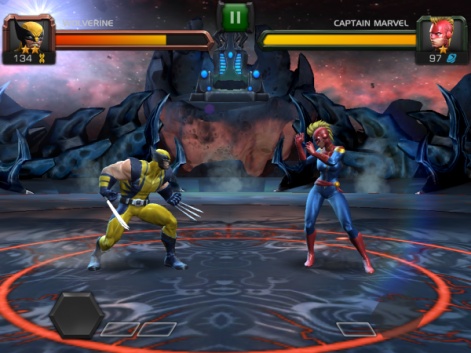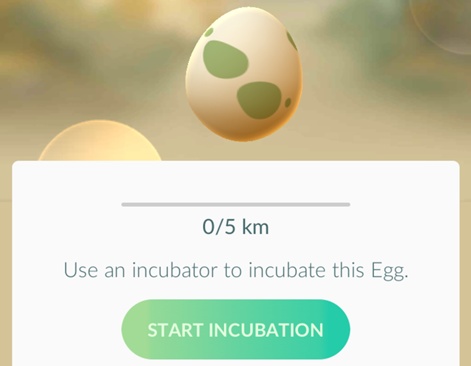Pepe Agell is the VP of business at Chartboost.
This article is part of an ongoing partnership with Chartboost. You can read more of its advice in terms finding new players and monetising audience via its Playbook blog.
Based on popular vending machines in Japan called gashapon, which give out random prizes when you insert cash, virtual gacha is the top monetisation mechanic in Japanese mobile games today.
While the method has sparked controversy in Japan, implementing gacha effectively can help devs turn a profit.
According to Neil Young of N3twork, a gacha has the potential to drive individual mobile games to $10 billion in revenue.
Many popular mobile games in the US, including Angry Birds 2, Marvel: Contest of Champions and Clash Royale incorporate a gacha in the game.
But what is the key to running a successful gacha monetisation mechanic? Devs should focus on lottery value and player engagement.
Make a gacha work for all your players
In mobile games, a gacha typically takes the form of a machine, roulette wheel or other randomisation engine that allows players to spin and roll to win prizes after spending money. Players put currency into the gacha and, voila, something pops out in return.
A gacha should offer value to everyone - whether they've just downloaded or have been playing for months.
To make a gacha work effectively in a mobile game, devs need to create an in-game economy where the value of the items within the gacha make using it worthwhile, no matter what the user wins in the lottery.
"The tricky part for lotteries, or rather the economy they fuel, is making sure all reward types are attractive throughout the user journey," says Arto Huhta, monetisation expert at Flaregames.
“A strong gacha setup has lucky rolls that don't break the early game, and common rolls that never become obsolete. If your gacha peaks in perceived value after 10 rolls, you have a problem.”
A gacha should offer value to everyone who takes part - irrespective of whether they've just downloaded or have been playing constantly for months.
Generating value through rarity
But how can a gacha generate value throughout the user lifecycle? There are two ways to do so. The first is to offer rare prizes for anyone who plays the in-game lottery.
In a blog post, Adam Telfer (product lead at mobile game company, Wooga) assessed the gacha in Kabam's fighting game Marvel: Contest of Champions.

He explained why showing a player a rare prize that they can only win through a lottery is an excellent way to encourage spending.
"A player wanting a four star rare Cyclops [in Contest of Champions] is going to have to purchase many, many gacha packs [Contest of Champions' equivalent of buying a spin or a roll] before they get exactly what they want," wrote Telfer.
It might take time to win. Once a player has a rare prize, however, being able to use it or show it off to other players gives them serious bragging rights - making money feel well spent.
The value of fusion
But what happens if a player doesn't win something rare in the gacha? Devs can still generate value.
Putting special prizes aside during the holidays encourage players to come back to the game.
"Allowing players to fuse unwanted items with other in-game items helps reduce player frustration," says Harry Holmwood, co-founder of mobile game studio The Secret Police.
“Most Japanese games use gacha in combination with fusion, allowing you to make use of gacha items you don't necessarily want or need.”
For example, although Pokemon GO doesn't have an explicit in-game gacha, its egg-hatching mechanic is a form of lottery.
Players can purchase incubators to hatch eggs and receive a random Pokemon. If they don't hatch a rare Pokemon they want, however, the game still provides value through the gacha.
With common Pokemon like a Pidgey, players still receive a bundle of rare candies to help evolve it.
A good gacha will keep players coming back because, as Holmwood puts it, "[everything] they get from it is useful somehow, even if only to boost something else they already own".
Take advantage of in-game events
Devs can also drive interest in a gacha by offering special, one-off lotteries to coincide with in-game events, Holmwood says.
"Offering customers an increased chance of receiving a super rare item on a given day can really drive retention since players don't want to miss the chance [to win]."

One way to do this is to offer a rare gacha around particular in-game events.
For example, raid gacha in RPGs or MMOs offer the chance to win juicy prizes after players fight their way to the end of a long and difficult-to-conquer dungeon.
This gacha also encourages players to engage with the game's top content, giving the players great prizes while reminding them why they loved the game in the first place.
Seasonal gachas are also an option. Putting special prizes aside at Christmas, Thanksgiving or other holidays will certainly encourage players to come back to the game.
And if they unlock one-off content, such as exclusive Halloween-themed buildings in The Simpsons! Tapped Out, it makes them more likely to continue playing and spending within a game.
Author Pepe Agell is the VP of business at Chartboost.
He leads business development, developer relations and support teams globally at Chartboost.






















